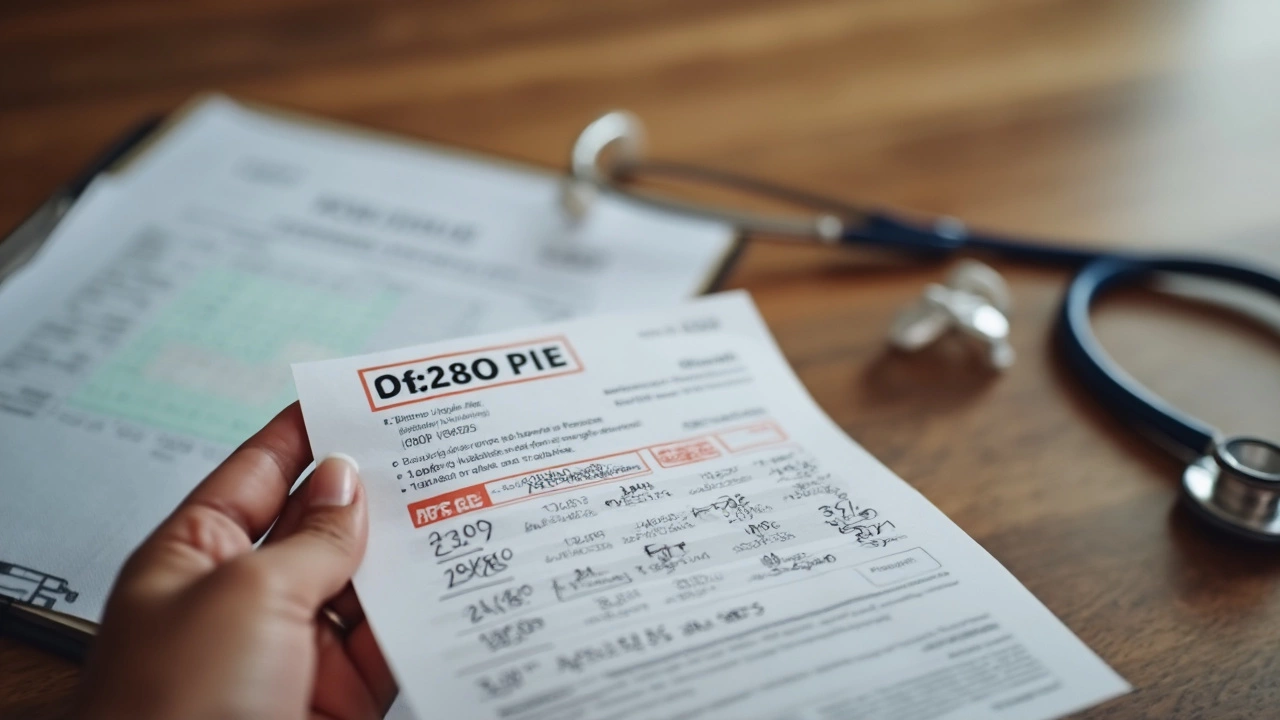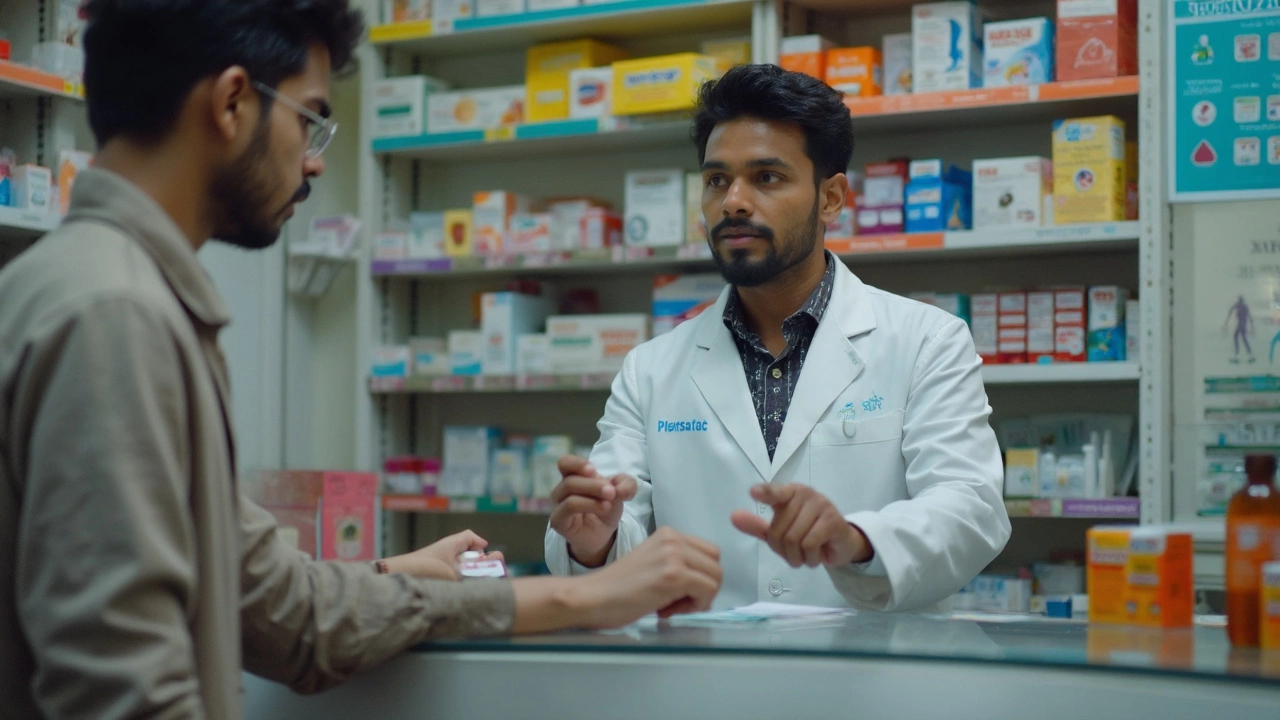
If you’re eyeing Ozempic as a way to manage your diabetes—or shed some extra weight—you probably keep hearing about A1C. So, what’s the deal with this number, and how does it actually affect your shot at getting Ozempic?
A1C is basically a report card that tells your doctor how high your blood sugar has been, on average, over the past three months. It’s not a number you can fudge with a good day or a bad lunch; it’s a real snapshot of your long-term blood sugar control. Most doctors and online pharmacies won’t even consider Ozempic unless your A1C is at least 7.0% or higher. Yep, there’s usually a hard line—anything below that and they might suggest just sticking to diet, exercise, or some other meds first.
But here’s where things get interesting: the rules aren’t exactly carved in stone. Sometimes, especially if you have other risk factors or your blood sugar spikes after meals, you might get Ozempic at a slightly lower A1C if your doctor thinks it’s right for you. Online pharmacy forms usually ask for your latest A1C—so it’s worth knowing your real number before you start filling out any questionnaires.
- Quick Rundown: What Is A1C and Why Does It Matter?
- The Magic Number: A1C Requirements for Starting Ozempic
- Can You Get Ozempic If You Only Want Weight Loss?
- Online Pharmacies: What They Check Before Prescribing
- Tips for Getting Approved (and What to Watch Out For)
Quick Rundown: What Is A1C and Why Does It Matter?
A1C gets tossed around a lot at the doctor’s office, but what does it actually show? The A1C test measures the percentage of sugar stuck to your red blood cells. Since those cells stick around in your body for about three months, this test basically tells how well you’ve been handling your blood sugar, not just today, but for weeks on end.
Most folks with diabetes hear about their A1C at every doctor visit, because it’s the key number for tracking progress. The higher your A1C, the more sugar has been hanging out in your blood—and that’s where risks for stuff like nerve damage, kidney problems, and even vision loss start going up.
Here’s a quick look at what your A1C number means:
| A1C Level | What It Means |
|---|---|
| Normal: below 5.7% | No diabetes |
| Pre-diabetes: 5.7%–6.4% | Higher risk, but not full-blown diabetes |
| Diabetes: 6.5% or higher | Official diabetes diagnosis |
Doctors use your A1C number to decide if you qualify for certain meds, including Ozempic prescription online. Think of it as the medical version of a background check—no surprise, online pharmacies do the same.
If you want the best shot at getting an Ozempic prescription, knowing your latest A1C is half the battle. You can usually get this number from a recent blood test at your local lab or clinic. If your report is a few months old, it might be smart to get retested before hunting for a prescription online.
The Magic Number: A1C Requirements for Starting Ozempic
Here’s the bottom line: doctors and online pharmacies usually look for an A1C of 7.0% or higher before they’ll write a prescription for Ozempic. This number isn’t random—it matches up with the official diabetes care guidelines, which say you need to show your blood sugar is above the ideal range before you qualify for certain medications. If your A1C is under 7.0%, they’ll often tell you to keep up your current plan, eat better, or try other medications first.
There are some exceptions, though. If you’re already on diabetes pills and your blood sugar is still running high, a provider might consider Ozempic even if your A1C is just slightly below 7.0%. Some insurance plans are stricter than others—you might have to back up your story with actual lab results from the past few months.
So what does this look like when you actually talk to a pharmacy or fill out an online form? Most places will ask for your most recent lab test date and the exact number. Don’t make a number up—the pharmacy might want proof (like your last bloodwork result) before they’ll ship anything out.
Here’s a quick cheat sheet for what they’re usually checking:
- Most places want to see an A1C at or above 7.0%.
- Recent bloodwork—usually from the last 3 to 6 months—counts more than old results.
- If you have other health risks (like a family history or high BMI), your doctor might bend a little on the strict number.
No two doctors or online pharmacies are exactly alike, but these rules are a good starting point for what to expect. If you know your A1C and why it matters, it’s way easier to skip the confusion and get straight answers about A1C for Ozempic.

Can You Get Ozempic If You Only Want Weight Loss?
This is the question that pops up everywhere: What if your main goal isn’t bringing down your blood sugar, but dropping the number on the scale? Here’s the straight answer—Ozempic (semaglutide) isn’t officially FDA-approved for weight loss unless you have type 2 diabetes. The approved weight loss version is called Wegovy, which is basically the same ingredient, just dosed higher and marketed for that purpose.
So, can you still snag a prescription for Ozempic just for weight loss through an online pharmacy or your doctor? It’s tricky. Some doctors are open to “off-label” prescribing if you have obesity (BMI over 30) or if your BMI is 27+ and you have other health issues like high blood pressure or cholesterol. But, if you have normal blood sugar and don’t meet these criteria, most online pharmacies will turn you down.
Here's a quick look at what usually qualifies for Ozempic prescription online vs. Wegovy for weight loss:
| Medication | Approved Use | Common Eligibility |
|---|---|---|
| Ozempic | Type 2 Diabetes | A1C ≥ 7.0%, or doctor-documented diabetes |
| Wegovy | Weight Loss (Obesity/Overweight with Complications) | BMI ≥ 30, or BMI ≥ 27 with health problems |
Also, insurance rarely covers Ozempic if your medical record doesn’t show diabetes. That means if you go the weight loss route, you’ll likely have to pay out-of-pocket—think $900 to $1200 monthly. Online pharmacies aren’t shy about asking for your current A1C and weight history before they even think about writing a prescription.
If you’re looking for just weight loss and don’t have diabetes, you’ve got a better shot looking into Wegovy or chatting with your doctor about other approved weight loss meds like Saxenda or Qsymia. It saves you the headache of hunting down Ozempic when it’s not really meant for that.
Online Pharmacies: What They Check Before Prescribing
Getting approved for Ozempic through an online pharmacy isn’t as simple as clicking a button and waiting for a box to show up. Most online pharmacies take your safety pretty seriously, and there’s a checklist they run through before they’ll let you order the medication.
Here’s what you’ll usually need to share:
- Your latest A1C result: This is the biggie. Most online pharmacies want proof that your A1C is at least 7.0% if you’re using Ozempic for diabetes. They’ll usually make you upload a lab result or type in the date and number from your most recent test.
- Your current medications: They’ll ask for a rundown, especially anything else you take for blood sugar or weight.
- Medical history: Stuff like your age, how long you’ve had diabetes, and if you have any heart or kidney issues.
- Weight and BMI: Some platforms also want your height and weight, just in case you’re looking to use Ozempic for weight loss.
- Allergies and past reactions to similar meds.
Usually, a licensed doctor or nurse practitioner reviews your info before they write a prescription. Sometimes they’ll want a video chat or phone call; other times it’s just a secure message. They’re making sure you actually meet the rules for Ozempic and that it’s safe for you.
You might run into extra screening if you mention heart problems, a history of thyroid tumors, or certain stomach issues, since Ozempic isn’t for everyone. If anything looks risky, they’ll usually say no or recommend you talk to your regular doctor first.
Here’s a handy breakdown of what the typical process looks like for most online pharmacies:
| Step | What They Check |
|---|---|
| 1 | Collect recent A1C test (usually 7.0%+ required) |
| 2 | Confirm current medications and allergies |
| 3 | Screen for pre-existing health conditions |
| 4 | Verify age and weight requirements |
| 5 | Doctor or nurse reviews and approves/disapproves |
If you skip details or fudge your numbers, you’ll get flagged—or worse, not get the script at all. So if you’re thinking of using an Ozempic prescription online service, have your lab results and health info ready. It saves a lot of back-and-forth and helps you get an answer faster.

Tips for Getting Approved (and What to Watch Out For)
Getting your hands on Ozempic through an online pharmacy isn’t as hard as it sounds, but there are a few hoops you need to jump through. Here are some things that can make your approval process smoother, plus a few red flags to keep an eye out for.
- Know your numbers. Always have your latest A1C ready. Most online pharmacies will want to see this documented—either from a lab result, a note from your doctor, or an official health record. Faking it isn’t worth it, since your prescription can get denied later if things don’t match up.
- Be honest about your meds and health history. You’ll need to list any medications you’re already taking, including metformin, insulin, or other diabetes medication. Leaving stuff out or making things up just blows up in your face if your doctor double-checks your pharmacy records.
- Mention any side effects or trouble with other meds. Some people end up on Ozempic because they couldn’t handle side effects from other blood sugar drugs. If that’s you, share those details. It makes your case look real and helps match you with the right treatment.
- Gather your paperwork. If you’re switching from another GLP-1 med or just want a second option, paperwork matters. Upload a clear photo or PDF of your recent lab results and any recent doctor’s notes that mention your blood sugar problems.
- Don’t fall for suspicious online offers. If a pharmacy isn’t asking for basic info like your A1C or doctor’s info, something’s not right. Real online pharmacies follow the rules and won’t hand out Ozempic without screening your info first.
Here’s a heads-up from the ADA (American Diabetes Association):
“Any prescription for a GLP-1 medication—including Ozempic—should be based on accurate blood sugar (A1C) data and a full review of the patient’s medical history.”
One big tip: double-check the pharmacy’s credentials before you buy. If they’re registered with NABP (National Association of Boards of Pharmacy) or show a VIPPS (Verified Internet Pharmacy Practice Sites) seal at the bottom of their website, you’re dealing with legit professionals. Never send personal info to any site that looks sketchy or doesn’t offer real pharmacist consultations.
Last thing—Ozempic has been a target for scammers because it’s in high demand and sometimes out of stock at regular stores. Always trust your gut. If the offer seems too good to be true, it probably is. Ask questions. Make sure the pharmacy requires a real prescription and sends you info for follow-up appointments. This keeps you safe and ensures you’re getting what you pay for.





Rohan Talvani
I am a manufacturing expert with over 15 years of experience in streamlining production processes and enhancing operational efficiency. My work often takes me into the technical nitty-gritty of production, but I have a keen interest in writing about medicine in India—an intersection of tradition and modern practices that captivates me. I strive to incorporate innovative approaches in everything I do, whether in my professional role or as an author. My passion for writing about health topics stems from a strong belief in knowledge sharing and its potential to bring about positive changes.
view all postsWrite a comment